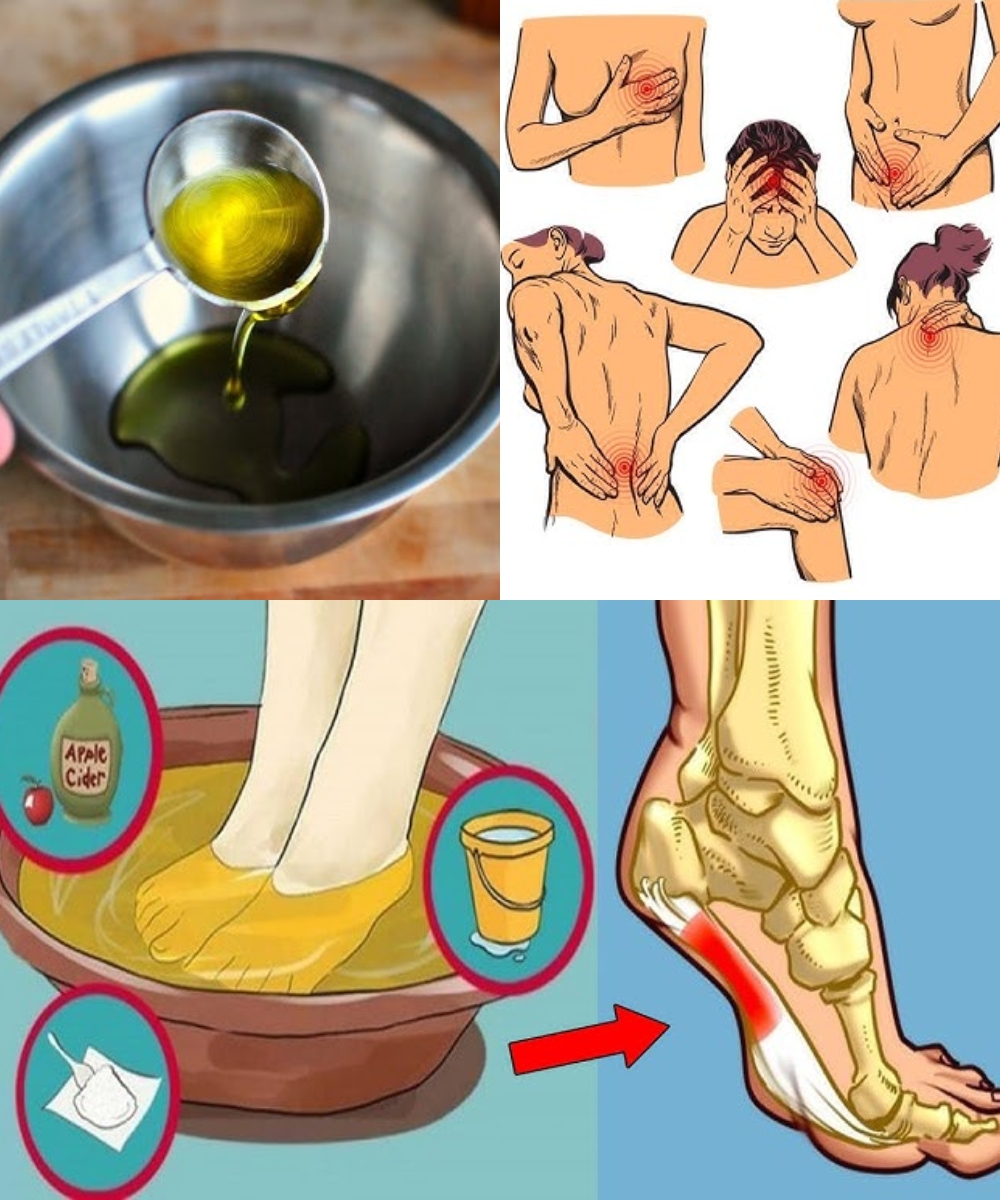ADVERTISEMENT
**Mix These 3 Ingredients to Relieve Pain in No Time – Homemade Natural Painkiller**
Pain is something that everyone experiences at some point in their lives. Whether it’s due to an injury, chronic conditions, or everyday wear and tear, pain can significantly impact your quality of life. In many cases, people reach for over-the-counter medications to ease their discomfort. However, there is a more natural and often more effective approach—**homemade painkillers** made from everyday ingredients. These ingredients can be just as effective as, and sometimes even more beneficial than, the synthetic alternatives.
One of the best remedies for pain relief involves using a combination of three powerful, all-natural ingredients: **turmeric**, **ginger**, and **black pepper**. Each of these ingredients has been used for centuries in traditional medicine for their **anti-inflammatory**, **analgesic**, and **healing properties**. When combined, they form a potent natural painkiller that can help alleviate various types of pain, including joint pain, muscle pain, headaches, and even pain from arthritis.
This article will guide you through the process of making a simple yet effective homemade natural painkiller using these three ingredients. We’ll dive into their individual benefits, how they work together to provide relief, and ways to incorporate this remedy into your daily life.
—
### **1. Understanding the Power of Turmeric, Ginger, and Black Pepper**
#### **A. Turmeric: The Golden Anti-inflammatory**
Turmeric, also known as **Curcuma longa**, is a vibrant yellow spice that has been used for thousands of years in traditional medicine across Asia. The main active compound in turmeric is **curcumin**, which is responsible for its **anti-inflammatory** and **antioxidant** properties.
– **Anti-inflammatory effects**: Curcumin has been shown to significantly reduce inflammation in the body by inhibiting the production of certain inflammatory molecules called **cytokines**. This is especially beneficial for people suffering from **arthritis**, **rheumatoid arthritis**, and other conditions associated with chronic inflammation.
– **Pain relief**: Curcumin’s ability to reduce inflammation also helps relieve pain. It has been compared to nonsteroidal anti-inflammatory drugs (**NSAIDs**) in terms of its effectiveness at alleviating pain, but without the side effects.
– **Antioxidant benefits**: Besides reducing inflammation, curcumin acts as a potent antioxidant, neutralizing harmful **free radicals** in the body that can damage cells and tissues.
Given its powerful medicinal properties, turmeric has been used in both **Ayurvedic** and **Traditional Chinese Medicine** to treat a variety of ailments, including **pain**, **digestive issues**, and **skin conditions**.
#### **B. Ginger: A Natural Analgesic**
Ginger, or **Zingiber officinale**, is another well-known root that has been used for centuries for its therapeutic properties. It is most commonly recognized for its ability to alleviate nausea and support digestion, but it also has potent **pain-relieving** properties.
– **Anti-inflammatory and analgesic properties**: Ginger contains bioactive compounds such as **gingerol** and **shogaol**, which have powerful anti-inflammatory and pain-relieving effects. These compounds work by blocking pain signals and reducing inflammation at the cellular level.
– **Joint pain and muscle aches**: Ginger has been studied for its effectiveness in reducing symptoms of joint pain and osteoarthritis. It has been found to decrease pain and stiffness in affected joints, improving mobility.
– **Muscle relaxation**: Ginger also promotes muscle relaxation, making it a great option for relieving muscle soreness or cramps.
Ginger’s ability to reduce inflammation and pain makes it a perfect ingredient to pair with turmeric in a natural painkiller remedy.
#### **C. Black Pepper: Enhancing Absorption and Potentiating Effects**
While black pepper is often used as a common spice in cooking, it is the **piperine** compound found in black pepper that gives it its medicinal value. **Piperine** is a potent bioactive compound that enhances the bioavailability and absorption of certain nutrients, including **curcumin** from turmeric.
– **Absorption enhancer**: One of the primary reasons black pepper is included in this combination is its ability to increase the absorption of curcumin in the body by up to **2000%**. Curcumin, although powerful, is poorly absorbed in the bloodstream on its own. The addition of piperine from black pepper helps the body utilize curcumin more effectively.
– **Anti-inflammatory effects**: Piperine also has its own anti-inflammatory properties. It can help reduce inflammation and pain in the body, providing additional relief when combined with turmeric and ginger.
– **Improved digestive function**: Black pepper is known to stimulate the production of digestive enzymes, aiding in the absorption of nutrients and promoting gut health.
By combining turmeric, ginger, and black pepper, you create a synergistic effect that enhances the effectiveness of each ingredient, making this natural painkiller more potent and faster-acting.
—
### **2. How to Make a Homemade Natural Painkiller with Turmeric, Ginger, and Black Pepper**
Now that we understand the powerful benefits of turmeric, ginger, and black pepper, let’s go over how to make a simple and effective homemade natural painkiller. This remedy can be consumed as a drink or applied topically, depending on the type of pain you are experiencing.
#### **A. Turmeric, Ginger, and Black Pepper Tea**
This tea is the easiest way to incorporate these three powerful ingredients into your routine. It’s soothing, effective, and provides quick relief for various types of pain.
**Ingredients:**
– 1 teaspoon of **turmeric powder**
– 1 teaspoon of **ginger powder** (or 1-inch piece of fresh ginger, grated)
– A pinch of **black pepper**
– 1 cup of hot water
– 1 tablespoon of **honey** (optional, for sweetness)
– Juice of **half a lemon** (optional, for added flavor and vitamin C)
For Complete Cooking STEPS Please Head On Over To Next Page Or Open button (>) and don’t forget to SHARE with your Facebook friends
